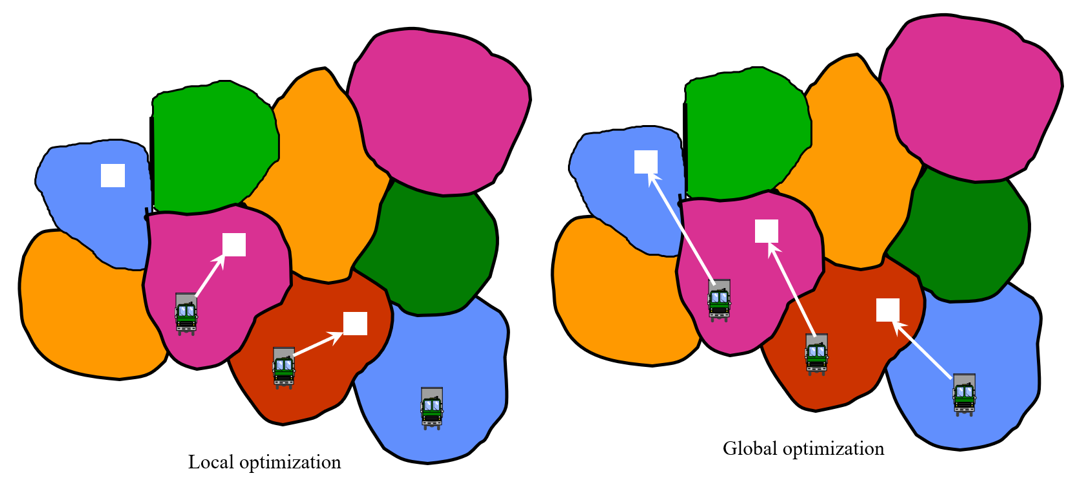The use of optimization for load matching in truckload trucking dates to the late 1970s when the emphasis was on covering loads while minimizing empties by optimizing across all drivers rather than allowing driver managers to limit themselves to just their own region.

One of the benefits of an optimization model is its ability to consider multiple factors simultaneously. Driver managers typically focus on empty miles and getting drivers home. This is not to say they ignore the other factors, but considering all of them is quite a juggling act.
- Empty miles
- Net revenue for moving the load
- Early/late pickup or delivery
- Whether the load moves through a driver’s home (and the pickup/delivery windows allow time off) or the destination of the load is near a driver’s home.
- Whether the driver is solo or sleeper, where we might penalize assigning a sleeper team to a short load.
- The value of a driver (say, a Texas-based solo driver) at the destination.
- The length of the load, and how it affects the 7-day rolling average, so we can encourage assignments of drivers with a low 7-day average to move longer loads.
Real-Time Issues Have Always Impacted Implementation
In addition to all these factors, we have to recognize that there will be real-time issues that arise that may be communicated outside of the normal flow of information through the computer. It could be a phone call between the driver manager and the driver, or an email or text with the driver or the shipper (say, with special instructions). This hidden information can impact which driver is best for a load, or which load is best for the driver. These issues influence how effective dispatch optimization may be and why many historical models are often not implemented.
The situation changes when we are using the engine to actually recommend real assignments to be implemented in the field. The benefits of an optimized dispatch system are complex, but if utilized strategically, can help carriers achieve company-wide goals in cost reduction and operational efficiency. The specific factors and their importance are based on the priorities of each individual carrier.
An optimized dispatch system can offer:
- Reduction in empty miles.
- Reduced “soft” events such as missed appointments or reduced time at home. We note that being late to an appointment by one minute, 100 times, is not as bad as being late once by 100 minutes. By contrast, saving one empty mile per dispatch over 100 dispatches saves just as much money as saving 100 miles on a single dispatch.
- Reduction in cognitive load by automating the dispatch function, allowing for better exception management.
A case can be made that these benefits may exceed (possibly by a wide margin) the traditional benefits of reduced empties. The optimization models of the 1970s have evolved with new technology to address the advanced complexities of today’s market.



